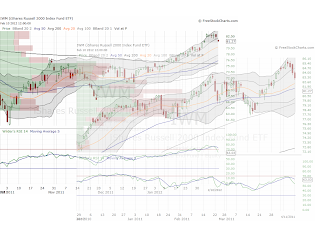“I could end the deficit in five minutes. You just pass a law that says that any time there's a deficit of more than three percent of GDP, all sitting members of Congress are ineligible for re-election.”
- Warren Buffet
“As long as the music is playing, you’ve got to get up and dance, we’re still dancing.”
- Chuck Prince, July 2007, as CEO of Citigroup
Recently, there has been much talk of a student loan debt “bubble,” record defaults, and associated predictions of an oncoming major dislocation in the education sector. As always, when faced with industry-level talk of this nature, I ask myself: “What’s the trade?”
Short Sally Mae, the entity on the hook for all these loans? What about Apollo Group and its associated cohort? Too obvious. Additionally, APOL actually has a 10% short float already, so I’m hardly the first to see this trade.
Finally, I’ve never been very good at playing these “imminent dislocations:” while we revere those who made their careers shorting the housing market in 2007 (a la Lewis’ The Big Short), we forget the legions of trampled bears who could not stay solvent long enough. In our current environment, there are greater macro trends in play, and lacking a catalyst, I see no reason to take the short trade.
Instead, the optimist in me tells me to wait. Sometime soon, the obvious solution to the student loan issue, and possibly several social situations commonly perceived as related, should present itself. Here, then, is what I’ll be looking for.
It seems a little strange that student loans tend to have similar rates, regardless of major or school choice. I suspect it would take an actuary, armed with the appropriate data, just a few hours to come up with risk of default metrics based on school and major. These loans can then be offered at their respective rates, based on what school the student is going to, what their major is, and any other creative factors said actuary could distill. Eventually, those making the loans can also sell the related paper, providing yet another source of revenue.
Of course, the forward-feedback loop this will create will incentivise certain majors and schools -- those that historically repay loans -- and disincentivize others. Tangentially, this will likely draw flak from people who have strong opinions of what the world “should” look like, regardless of what the world actually looks like. I can’t help but wonder how many of these critiques will come from the same folks that bemoan the current structure of student loans.
This, then, is the trade. I’m going to start looking around for something that resembles the structure described above. When it presents itself, I plan on going long. How do I know it will? I consider it inevitable: the current structure is unsustainable, and I haven’t heard any better ideas.
...or am I just missing something big and obvious? Won’t be the first time.













